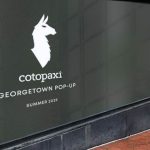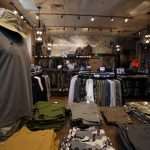Saucony said in its recent call with analysts that the mall retailers have “experienced and reported erratic quarter-to-quarter, month-to-month and even week-to-week results”, and that their inconsistent trends have placed “increased pressure” on the “normal supplier-to-retailer account relationship”. That pressure was said to be “especially impactful” during the third quarter.
The result was that Saucony domestic footwear experienced “unusually and abnormally high” cancellation rates during the quarter, with a particular emphasis at the beginning of the quarter. This was attributed to “retailer uncertainty in the marketplace”. The company said that the cancel rates have begun to abate and have “moderated substantially” in Q4 to-date.
The issues with certain retailers appear to be stabilizing as the company unveiled a new “price-point” footwear program for the mall, a much improved order backlog, and strong Q3 gross margins that solidified the companys “eighth consecutive quarter of meeting or exceeding” earnings estimates.
Backlog for open orders through February is up 12% and twelve-month backlog increased 6.0%, or gained 4.0% on a constant dollar basis.
The company said that the “corporate” accounts, which are comprised of most national retailers, are very reluctant to book orders outside of a four-month window now, making it more difficult to measure backlog on an apples-to-apples basis.
Technical product made up 90% of open domestic backlog with the balance represented by Originals. Crossover product, or the product that retails in the $60 to $75 range, made up approximately 34% of the domestic backlog and 22% of domestic sales in Q3.
On a constant dollar basis, net sales for the third quarter declined by 7.4% to $31.2 million. Saucony brand footwear was approximately 78% of total Q3 sales, with HIND and factory outlet stores making up the balance.
Saucony Domestic net sales were approximately $15.8 million, a decline of 23.3% from the year-ago quarter that reflected “decreased technical, special makeup and Originals unit volumes”, partially offset by higher footwear ASP. Other Domestic sales increased 21% to $6.7 million due primarily from HIND increases.
Saucony International sales increased 35% to $9.1 million in the quarter, due to increased footwear unit volumes, favorable currency rates and increased sales of Saucony apparel. Other International sales were $353,000 for the quarter versus $845,000 in Q3 LY.
Despite the upheaval caused in the Q3 business by all the instability that the company saw in the mall, Saucony said they have now “aggressively and affirmatively” focused their account relationships at “all channels within the sporting goods footwear industry”.
“In fact, we have recently begun to expand our product exposures and increased our product assortment and shelf space at some of the larger major mall-based accounts as a result of this renewed focus and this renewed effort,” said company president, chairman and CEO John Fisher.
The effort looks to be driven by the recent addition of Tom Carleo from Nike, who has brought to Saucony a “much greater understanding” of the needs of the mall retailer.
As a result, Saucony is pitching what they call “crossover” product that addresses the mall consumer, mainly “$60 to $75 retail price point product” taken down from running profiles and morphed to appeal more to the “multi-user”. Fisher said they “always knew that that was the gold mine, if you will, at the mall channel”, but they needed someone with Carleos background to develop and drive the strategy.
“They won't be categorized outside of the running silhouette, functionally they are going to appeal to — hopefully, to a much broader audience,” said Fisher.
The group of shoes is expected to feature one category that is running-inspired, a second with multi-purpose shoes with a womens focus, and a third set that is a “traditional walking product” that the company sees helping comp up that category.
Fisher thinks that “the real opportunity for niche brands is not to compete on price but to take advantage of their core strengths (in this case womens technical running) and create an unassailable selling position.”
>>> It is impossible for a small brand to compete effectively on price in this marketplace. Better to dance with the one what brung ya
>>> Interesting that SCNY sees opportunity in the mall at the same time we see K-Swiss and Puma reluctant to open up the business
>>> Gold to be mined? Or is it merely Pyrite?















